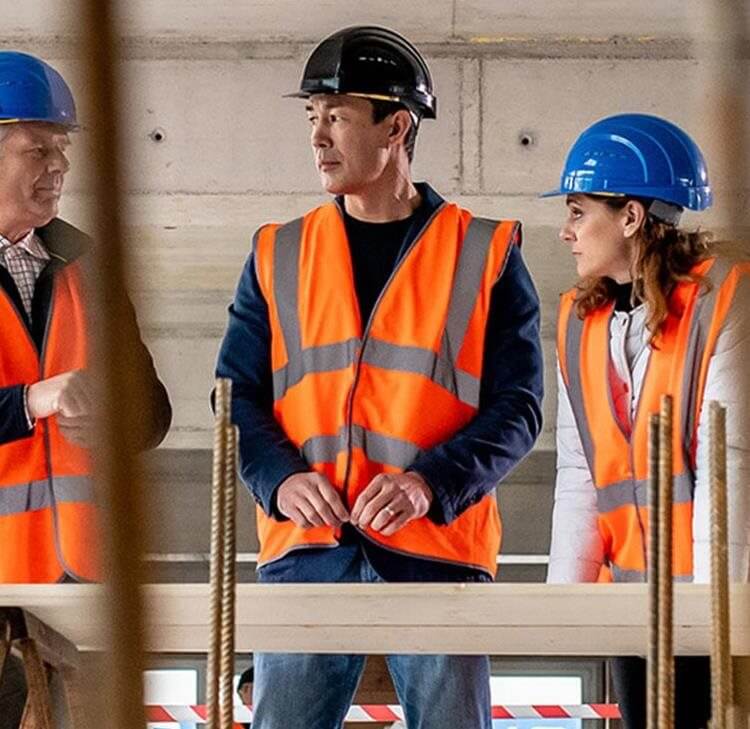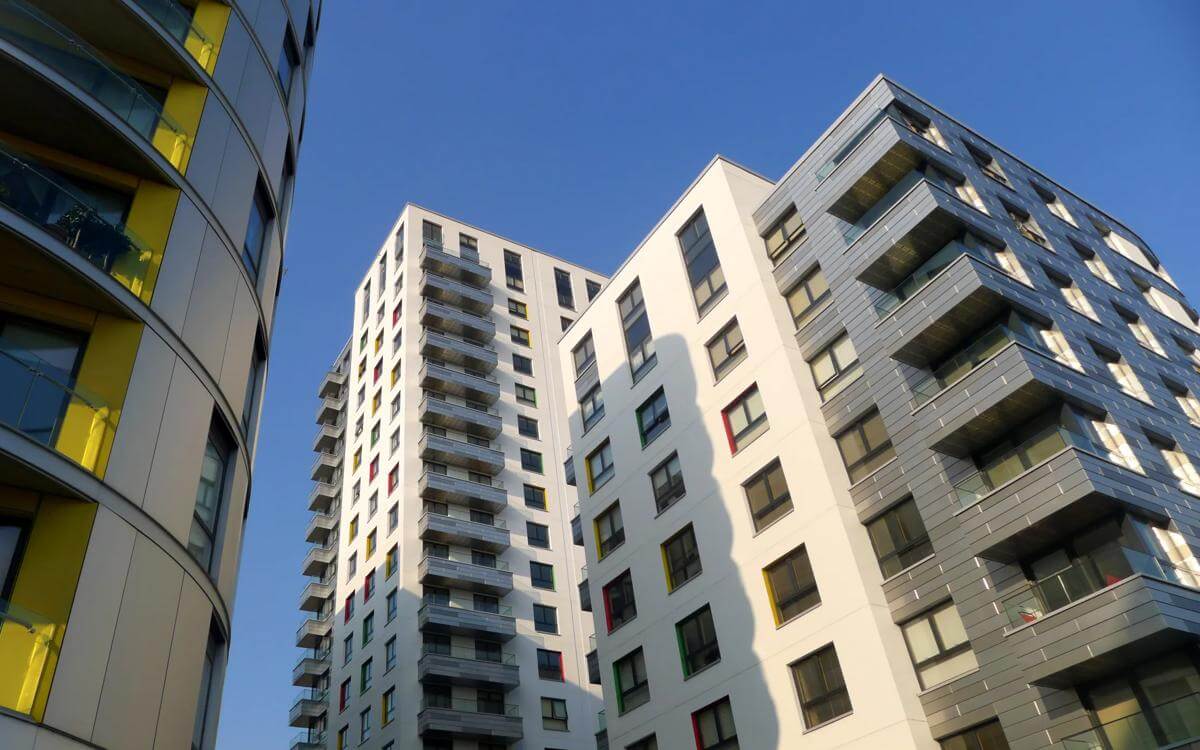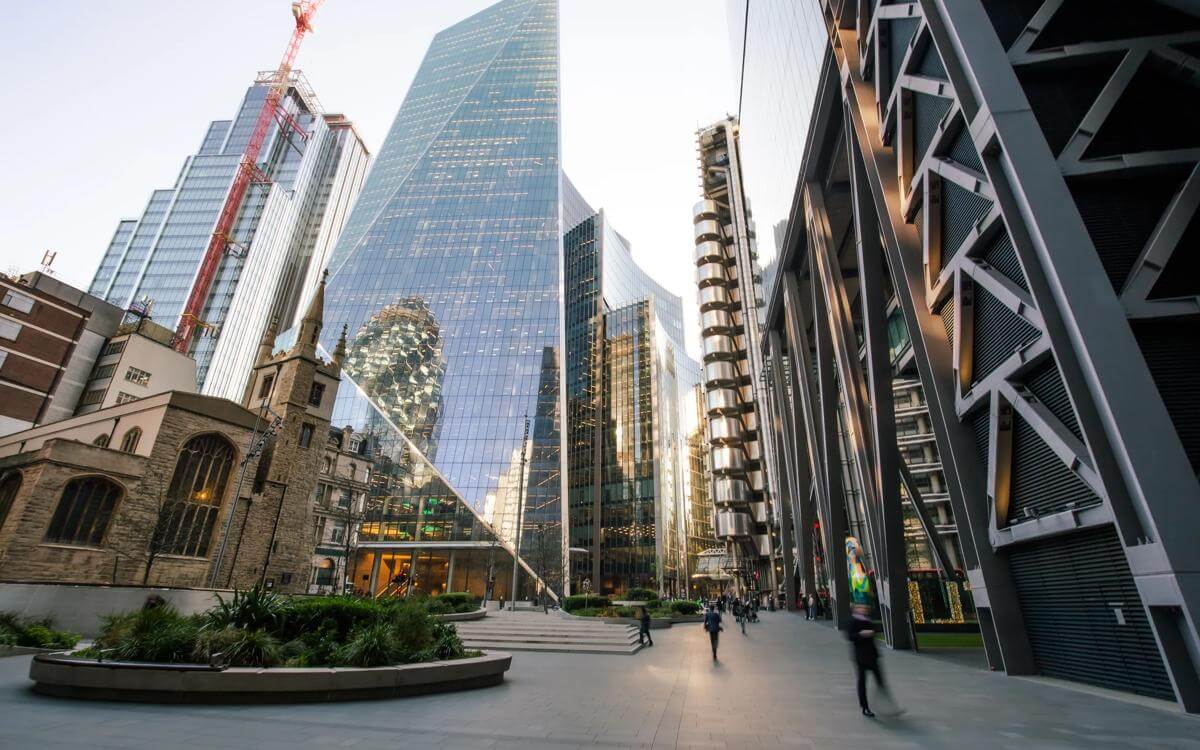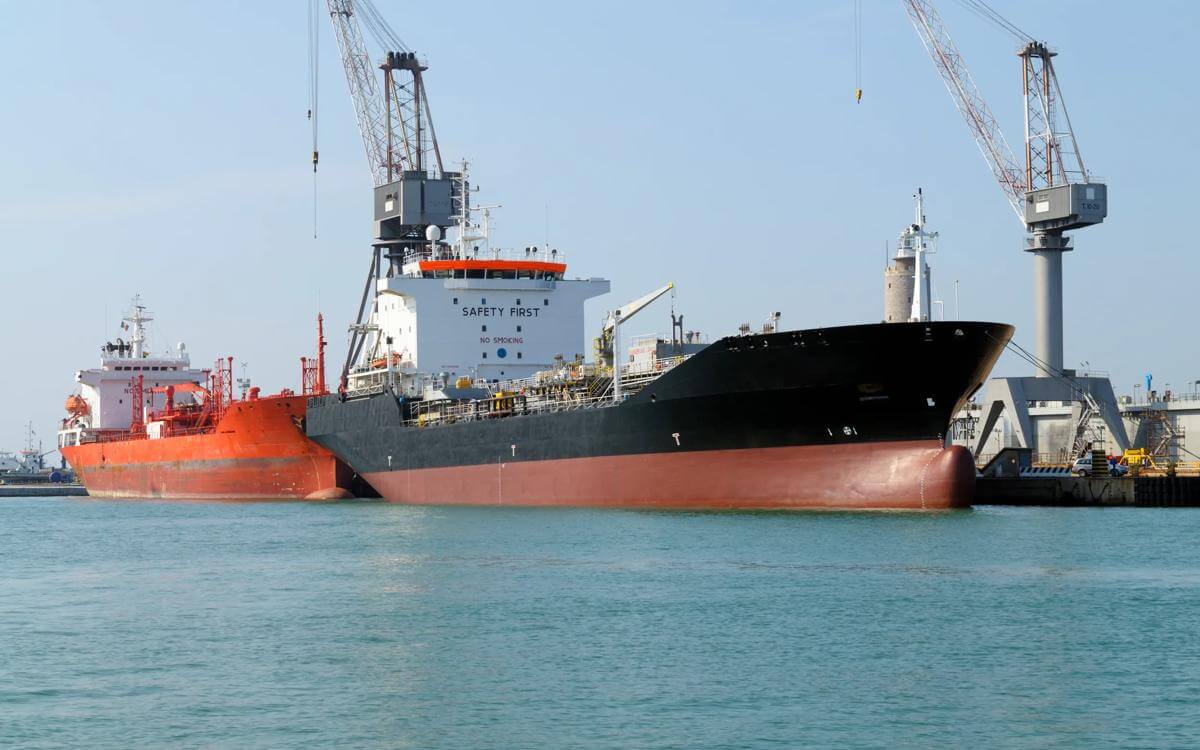The construction industry and its insurers have faced a series of major challenges in recent years. The collapse of Carillion was a significant setback, followed by the devastating claims linked to the Grenfell Tower tragedy.
Financial pressures on the sector have only grown, driven by several factors: inflationary impacts from COVID-19, economic disruption caused by the war in Ukraine, rising interest rates, and changes introduced in the October 2024 budget — particularly the increase in employer National Insurance contributions (NICs). All of this has not only led to an increase in the cost of construction projects but also an increasing number of contractors going into administration or liquidation, which in turn has led to insurers’ coverage files turning into claims against them under the Third Parties (Rights Against Insurers) Act 2020 (the Act). We consider below the extent to which the market may cool down in 2025 and explore other emerging challenges on the horizon.
Articles in this section:
- Insolvencies, disputes and claims under the Act.
- The Building Safety Act 2022 (BSA).
- The rapid growth of AI in construction.
- Sustainability.
- Decrees in default against policyholders bind insurers under the 2010 Act.
Insolvencies, disputes and claims under the Act
Author: Tim Claremont
Unfortunately, cash flow remains a problem for many companies, with some high-profile projects continuing to cause problems. While some consultants initially predicted a return to significant growth in 2025, later forecasts were more pessimistic, suggesting (with the notable exception of data centres) limited growth. However, this may change if planning reforms free up housing projects and/or the government’s recent waving through of 150 major projects ignites that sector.
As a result, following some notable casualties in 2024 (Buckingham and ISG), the industry appears set to remain under pressure in 2025, and it may be that we see another major construction firm enter administration or liquidation. This would give rise to obvious immediate challenges for those involved in the project itself and those in the wider industry will be giving thought to how similar future events can be mitigated (e.g., by way of including extension of time provisions in contracts). In the meantime, there is likely to be an increased number of disputes as contractors and consultants seek to leverage the contracts for existing projects to provide much needed cash flow, both in terms of seeking to recover the increased NIC (whilst amending future contracts to clarify the same) and more generally.
Increased insolvencies will almost certainly also result in more claims brought under the Act. Whilst case law regarding this legislation remains relatively limited, there were some important decisions in 2024, some of which are problematic for insurers, most notably Scotland Gas Network PLC v QBE UK in Scotland. In this case, the Scottish Inner House confirmed that if a third party obtains a default judgment against a policyholder, the Act does not permit insurers to dispute the policyholder’s liability under that judgment to the third party — highlighting the risks for insurers should a policyholder facing insolvency fail to defend a claim in full or at all. We wait to see if this will be appealed to the Supreme Court. For now, several issues remain unclear, including questions about limitation periods and the obligations under the Act to provide information, all of which are likely to increase the duration, and therefore costs, of such claims.
The Building Safety Act 2022 (BSA)
Author: Matt Jones
Building liability orders and wider liability
Many in the industry are considering the extent to which they wish to (and/or should) accept the principal designer role under the BSA, given both the need to have the relevant skills, knowledge, experience and the responsibilities of the role (e.g., to coordinate matters relating to the design work so that “all reasonable steps” are taken to ensure that the design complies with all relevant requirements). We have seen companies adopt various approaches to this — some are happy to accept the role whilst others are not, but in any event, underwriters will wish to understand this issue in detail.
Further, since the BSA came into force, the High Court has also had the power to make a building liability order (BLO) if it considers it “just and equitable” to do so (being a unique way to pierce the ‘corporate veil’). In 2024, Willmott Dixon Construction Ltd v Prater confirmed that a claim for a BLO can proceed before liability has been determined in the main claim (i.e., against the company which is deemed to have the relevant liability) without joining the party against whom the BLO is sought to the main claim. However, there remain areas of uncertainty, including who can apply for a BLO (the BSA is silent on this point), the precise circumstances in which the courts will consider it “just and equitable” to order a BLO, and the circumstances in which foreign jurisdictions will enforce a BLO against companies registered in its jurisdiction and these issues may come before the courts in 2025.
The rapid growth of AI in construction
Author: Christina Timson
Following on from last year’s horizon scanning, the construction industry has encountered unprecedented growth in the use of artificial intelligence (AI) technologies to fulfil projects. Looking ahead, the incorporation of AI is clearly going to become even more prevalent in the market in 2025.
The move towards a more digitally enhanced industry is becoming more topical as time moves forward. Whilst the industry is navigating the various advancing technological changes, stakeholders need to be aware of any legal risks that might arise as AI starts or continues to be embedded into construction projects.
Over the last year, there has been a substantial increase in demand for the creation and development of data centres, to host the exponential growth of data being created across various platforms. The delivery of such large projects poses several challenges. The use of 3D models in construction projects may be economical but poses challenges, for example in relation to litigation. Moving forward into 2025, it will be interesting to see the growth in AI powered tools theoretically making sites safer and more energy efficient, as well as how the industry continues to utilise AI in other ways to further the construction industry.
Increasing demand for data centres
The rise of AI over the last few years has led to an exponential growth in the need for, and the development and creation of data centres. At present, data centres worldwide consume around 1 – 2% of overall power, however with the growth in applications such as agentic chatbots, image generation tools, autonomous vehicles and smart manufacturing tools this is likely to double or even triple over the next five to ten years.
It has become ever more vital that businesses ensure that data centres are built with advanced infrastructure and energy solutions to combat the vast amount of data that will be generated in the future.
Liability for AI
With the rise of AI and its uses within the construction industry, it is becoming ever more important to ensure that contracts are drafted with clear liability clauses. This is needed to address possible issues arising between the manufacturer and the company itself in cases of errors, accidents, or failures. In this instance, the contract needs to be clear in determining the roles, obligations, and responsibilities among those involved in regard to the use of AI tools in the project.
For example, the construction industry is using advanced technologies such as Building Information Modelling (which has been around for some time and is now becoming standard practice), as this not only improves efficiency and reduces waste, but it also enhances cross collaboration throughout the supply chain.
Any 3D models or simulations created for construction projects using this technology, particularly if AI is involved, will need to contain clear terms as to which entity assumes liability for any errors, accidents, or failures.
Intellectual property implications
The implementation of AI in construction projects is becoming more prevalent and it is crucial that contracts are clear as to which entity will own the intellectual property (IP) rights of material generated by AI, both before the project has commenced and whilst/after the project has finalised.
AI powered design tools
The increase in AI powered design tools is having a significant impact on infrastructure and construction projects by improving efficiency, safety, and decision-making throughout the planning, construction, and maintenance stages. Furthermore, such tools can assist in streamlining the complexities of infrastructure projects, making them more cost-effective, sustainable, and adaptable to future challenges.
Some examples of how AI powered design tools are assisting with projects are set out below:
1. Project planning:
With the use of AI tools, vast amounts of data is used to assist with optimising the planning and design of infrastructure projects. Machine learning algorithms continue to assist engineers and architects identify the best designs based on factors such as environmental conditions, traffic patterns, and cost efficiency. AI is also automating the creation of 3D models and simulations, to allow for a more accurate visualisation and better-informed decision-making.
2. Traffic management:
AI is increasingly being used in smart city infrastructure, particular for traffic management. AI can analyse traffic flow data from sensors, cameras, and GPS to optimise traffic signals, reduce congestion, and improve the efficiency of transportation networks. It can be used to aid in the planning of new roads, intersections, or public transport routes.
3. Construction automation
Within infrastructure construction, AI is driving the use of autonomous machinery, such as drones, robotic excavators, and self-driving trucks. These machines can in theory work around the clock with little to no human intervention, which in turn speeds up construction timelines, improves accuracy, and enhances working safety.
4. Risk assessment and safety
AI tools are and will continue to play a vital part in identifying and assessing the risks on projects by combining previous data, environmental factors, and real time conditions.
To ensure that AI design tools are being used to their full potential, effective data management systems are required. In addition, ethical and legal considerations must be taken into account (for example with reference to the liability point noted above), to identify any potential risks with using the tools (system failures, delays or cost overruns) and to ensure that the correct education/training is given to those who will use the technology.
The construction industry is facing unprecedented times with the fast-paced growth of AI and the above is only a snapshot of a number of elements which will continue to affect the industry in 2025. Ensuring awareness around AI’s involvement in the industry, both its potential and its risks, will enable businesses to thrive and harness its growth potential.
Sustainability
Author: Jonathan Vickers
Finally, numerous sustainability initiatives are on the in the industry. For example, the UK Green Building Council’s unified approach to building standards and net zero carbon emerged in September 2024 with the introduction of the UK Net Zero Carbon Buildings Standard (the Standard). While a pilot, the Standard provides a clear, objective and evidence-based definition of ‘Net Zero Carbon Aligned Buildings’ with the goal of implementing a consistent approach across the construction industry and ensuring that claims of net zero status are genuine (given some questionable claims previously).
Currently the Standard is not legally binding or mandatory and it is not yet clear how widely it will be adopted. For those developers and building owners who do adopt it, there will be a mandatory set of best practices to implement, but it is not yet clear if an owner or developer might seek to impose performance damages for a failure to comply with the Standard or, if so, the extent to which those damages will be agreed or can be drafted and flowed down through the contractual chain. One option is the NEC Option X29 which sets out performance requirements akin to KPIs which have incentives linked to their delivery, allowing parties to be creative and set ambitious, positively incentivised requirements, and which can be easily adapted to other forms of contract such as the JCT Contracts with the key being the principles it encourages discussion on. Regardless, those in the industry will need to consider these clauses carefully with an eye on avoiding increasing their potential liability.
Decrees in default against policyholders bind insurers under the 2010 Act
Author: Rachael Murphy
In Scotland Gas Network Plc V QBE UK Ltd and others,[1] the Scottish Courts considered the question of whether decrees in default (default judgments) are sufficient to establish liability for the purpose of a direct claim against insurers under the Third Parties (Rights Against Insurers) Act 2010 (the “2010 Act”). The Outer House determined that it was, and on appeal, the Inner House agreed. We consider the impact this may have on insurers moving forward.
The 2010 Act
The 2010 Act is a significant piece of legislation in the UK that streamlined the ability of third parties to make claims against liability insurance policies where the policyholder has become insolvent.
Before the 2010 Act, the process for a third party to claim against an insurer of an insolvent party was cumbersome and fraught with legal hurdles. The third party first had to establish the liability of the insolvent insured party, often through lengthy and costly legal proceedings, before they could even begin to make a claim against the insurer, in some cases only to find that the insurer had coverage defences against paying the relevant indemnity. This process was prohibitive for many claimants, effectively barring them from accessing the compensation they were due and for which the insolvent party was (potentially) insured.
The 2010 Act sought to address these issues by simplifying and expediting the process. Once an insolvency trigger occurs, the rights of the policyholder automatically transfer to the third party, meaning that the third party can (but does not have to) directly pursue a claim against the insurer without first having to establish the liability of the insolvent party. To succeed against the insurer under the 2010 Act, the claimant would have to establish liability and overcome any valid coverage defences available to insurers (albeit that the 2010 Act rendered certain coverage arguments unenforceable against the third party, such as notification provisions that would apply after the insolvency event).
The Scotland Gas case
In 2015, Scotland Gas Network (‘SGN’) sued D Skene Plant Hire Ltd (‘Skene’) for £3m in damages for physical damage caused to SGN’s pipeline arising from a landslip, which was allegedly caused by Skene’s quarrying activities. In 2017, Skene went into liquidation, thereby triggering the provisions of the 2010 Act. A decree by default (default judgment) was granted against Skene for the full amount and no attempts were made to appeal or set it aside.
QBE, Skene’s public liability insurer, had rejected the insurance claim but remained at risk of potential liability under the policy. Nevertheless, SGN sought to recover the damages through the 2010 Act. The insurers contested this, raising coverage arguments and disputing whether liability had been “established” as required under section 1(4) of the Act, which states:
1. Rights against insurer of insolvent person etc…
(4) For the purposes of this Act, a liability is established only if its existence and amount are established; and, for that purpose, “establish” means establish
(a) by virtue of a declaration under section 2 or a declarator under section 3,
(b) by a judgment or decree,
(c) by an award in arbitral proceedings or by an arbitration, or
(d) by an enforceable agreement. (Our emphasis added)
The Outer House (Scottish Court of first instance) held s.1(4) did not require an assessment of the merits of the dispute and determined that liability under s.1 was so established by the decree by default, which established both the existence of the liability and the relevant amount. This decision was upheld on appeal. The matter has now been remitted for consideration of the coverage defences raised by QBE.
Approach in England
Although not technically binding, we expect the English Courts, up to the Court of Appeal level, will be slow to depart from this decision, unless it is considered by the Supreme Court. The 2010 Act is applicable in all jurisdictions within the United Kingdom, save for a few instances where jurisdictional distinctions have been made. Indeed, the fact that the draftspersons included references to both ‘decree’ and ‘judgment’ in s1(4) indicates the intention for a unified approach to apply (although whether that approach aligned with the Scotland Gas decision remains to be seen). Further, there are authorities that expressly comment on the “undesirability” of conflicting decisions in England and Scotland.
Authoritative legal commentators, such as MacGillivray on Insurance Law, had cast some doubt on the decision of the Outer House, based on the existing case law that predated the 2010 Act, which required liability and quantum to be ascertained in contested proceedings. The 2010 Act is silent on this requirement and the Scottish Courts expressly rejected insurers’ argument on this point, considering the requirement for a merits assessment would introduce uncertainty. The door has been left open for an appeal to the Supreme Court.
If insurers find themselves in a similar position, where a default judgment has been obtained, thought could be given to an application to set aside the default judgment (say) under CPR 40.9, which states: “A person who is not a party but who is directly affected by a judgment or order may apply to have the judgment or order set aside or varied.” However, such an approach is yet to be tested in this context and its merits will, in any event, be fact specific.
Insurers must carefully consider their strategic approach, weighing the risk of default judgments following a policyholder’s insolvency against the strength of their coverage defences. Policy response and strategy should be thoroughly evaluated, as insurers can still contest claims even in cases of default liability. Defences may include insufficient coverage scope, the application of exclusions, or breaches of relevant policy conditions.
In the meantime, we will be closely monitoring developments both as to any further appeal in Scotland Gas and more generally in relation to the impact on insurers of the 2010 Act.
Key contacts

Tim Claremont
Partner
tim.claremont@brownejacobson.com
+44 (0)20 7871 8507

Lorraine Longmore
Senior Associate
lorraine.longmore@brownejacobson.com
+44 (0)115 976 6084
Authors

Tim Claremont
Partner

Matt Jones
Legal Director

Rachael Murphy
Principal Associate
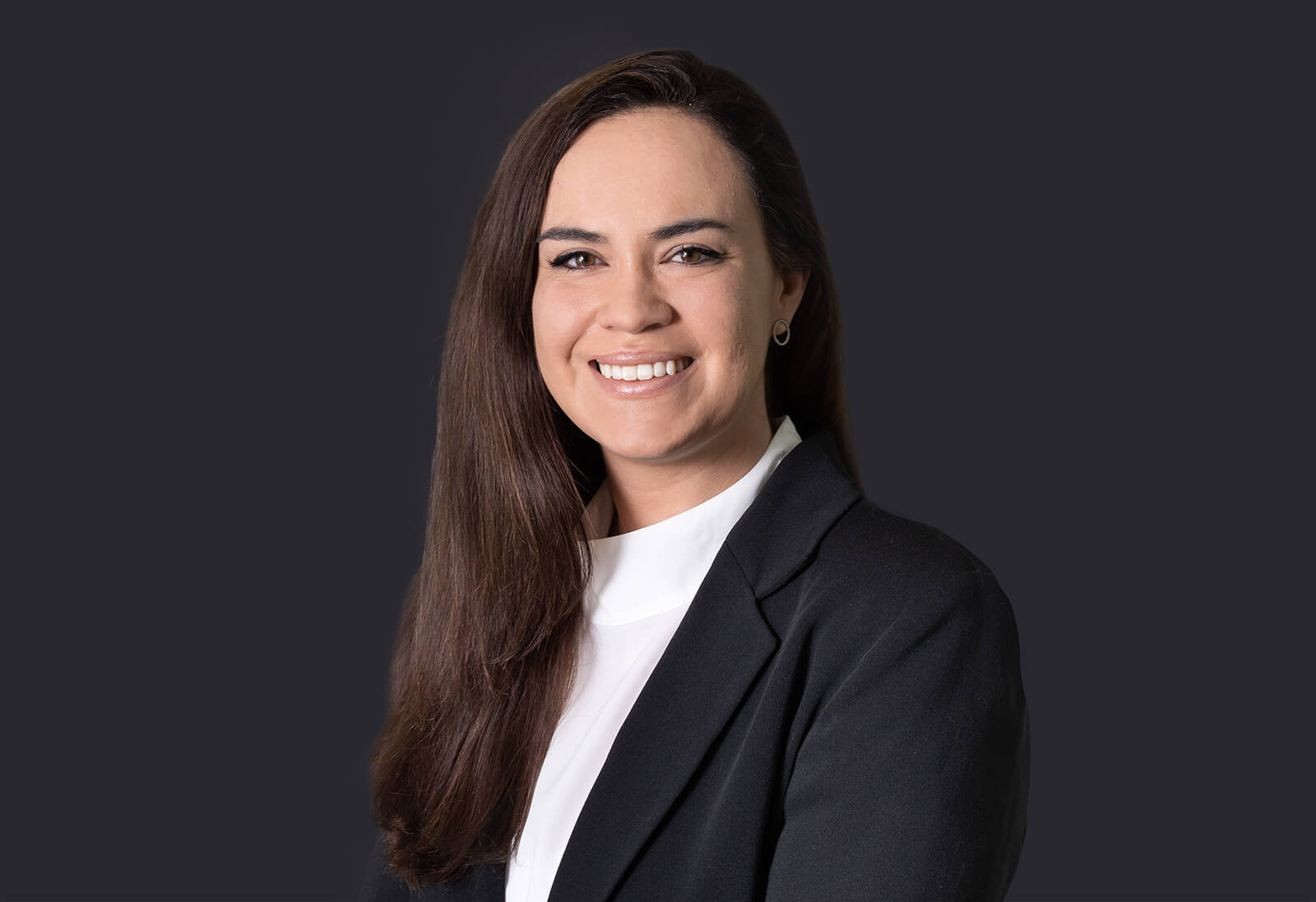
Christina Timson
Associate

Jonathan Vickers
Legal Director
You may be interested in...
Legal Update
How geospatial data is becoming a crucial part of risk analysis: What this means for insurers
Legal Update - Building safety
URS v BDW: Comment and practical implications for the building industry
Legal Update
The rapid growth of AI in construction
Legal Update
2025: Horizon scanning in construction
Legal Update
Contractor insolvency: Peabody Trust v NHBC
Legal Update - Building safety
The Building Safety Act 2022: Managing risks for private equity investors and acquirers
Legal Update - Building safety
Case update: Secretary of State for Levelling Up, Homes and Communities v Grey GR Limited Partnership
Legal Update
JCT 2024: What’s new? An overview of the changes
Legal Update
2024: Horizon scanning in construction
Legal Update - Building safety
The Building Safety Act: What to expect in 2024
Legal Update
The impact of insolvencies on construction in 2024
Legal Update - PFI and PPP hub
Managing the expiry of PFI contracts
Legal Update
ESG and the path to net zero: Construction industry considerations
Legal Update
Modern methods of construction and modular buildings
Legal Update
The rise of AI in construction
Legal Update
A new JCT suite in 2024
Legal Update - Building safety
New building control regime for higher-risk buildings
Published Article
Al in construction: Do your contracts mitigate the risks?
Legal Update
How to mitigate risk in disputes arising from AI use in construction projects
Legal Update
Contractors' liability and contract works exclusion
Legal Update
Recklessness not ‘accidental’ when it comes to trespass
Legal Update
Underlying contracts remain key in arguments over scope of co-insurance
Legal Update - Building safety
Building Safety Act 2022: New duty holder and competency regime from 1 October 2023
Legal Update - Building safety
Building Safety Act 2022: New building control regime from 1 October 2023
Legal Update
Higher-risk buildings – are you ready for 30 September 2023?
Legal Update
A ‘slick’ result for Shell: the Supreme Court considers limitation in Jalla v Shell
Opinion
New provisions for higher-risk residential buildings now in force
Guide
2023: Horizon scanning in construction
Legal Update
‘You get what you pay for’ – the meaning of ‘professional services’ in D&C policies
Opinion
Directors fined for unsafe removal of asbestos
Two directors of a construction company were fined after failing to ensure the safe removal of asbestos from a plot of land. On 14 and 15 November 2021, Directors Anthony Sumner and Neil Brown, of Waterbarn Limited were involved in the uncontrolled removal of asbestos material from a plot of land in Grasscroft, Oldham.







